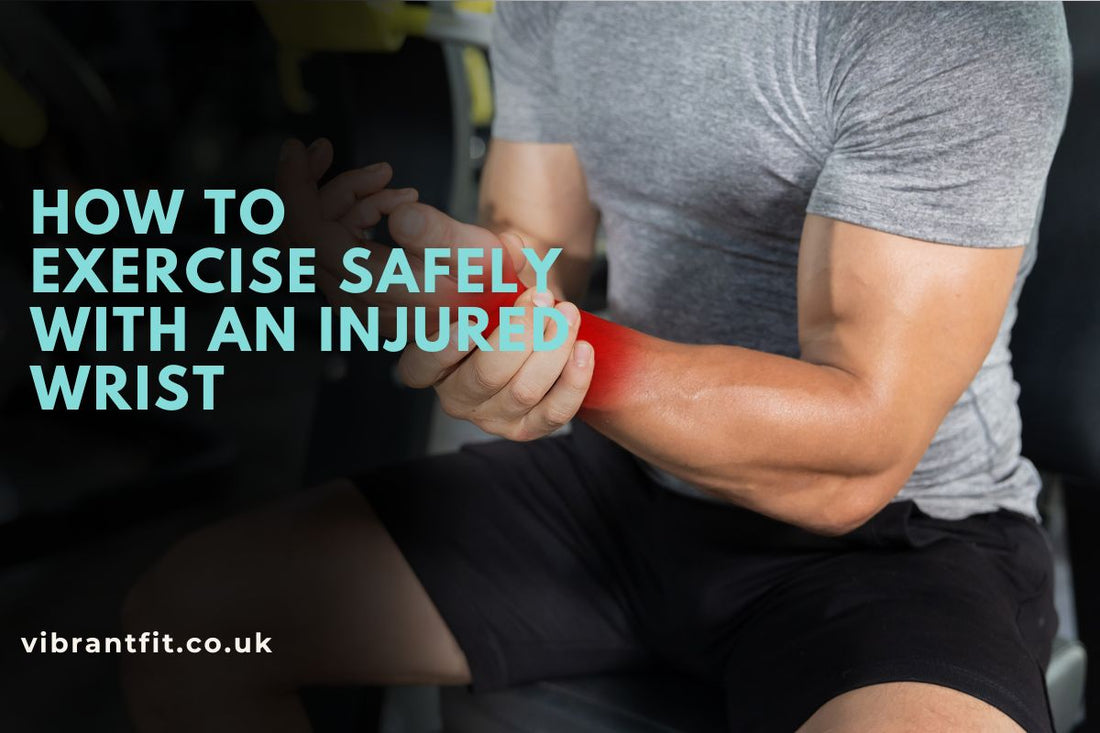
Can I Exercise with an Injured Wrist?
Share
Injuring your wrist can feel like a huge setback, especially if you’re someone who loves to stay active. It is frustrating when pain or discomfort stops you from doing your usual workouts. But the good news is, you don’t have to give up exercise completely just because your wrist is hurt. The key is understanding your injury and finding safe ways to stay fit without causing more damage. Exercising wisely while protecting your wrist can help your recovery and keep your spirits up.
Wrist Injuries and Their Impact on Exercise

Your wrist is a complex joint. It is made up of multiple bones, joints, tendons, ligaments, and nerves. This complexity allows a wide range of movements but also means it can be vulnerable to various injuries. Common wrist injuries include sprains, strains, fractures, and tendon inflammation. These injuries affect your wrist’s stability and movement. When you have a wrist injury, some movements may cause pain or weakness. This makes exercising tricky, especially activities that involve gripping, lifting, or weight-bearing on your hands. Knowing the type and severity of your injury helps decide what exercise is safe.
When Is It Safe to Exercise with a Wrist Injury?
Not all wrist injuries are the same. Some are minor and heal quickly, while others need more time and care. It is essential to get your injury evaluated by a healthcare professional before you start exercising again. If your wrist hurts badly, is swollen, or feels unstable, exercising might do more harm than good. On the other hand, mild sprains or strains may allow some gentle activity if supported correctly. Listen to your body and avoid pushing through sharp pain. Starting exercise too soon or too intensely can delay healing or cause re-injury. Safety comes first.
Protecting Your Wrist During Exercise

Using the right support is vital when exercising with a wrist injury. Wrist braces, splints, or supports help protect the injured area from further strain. They keep the wrist stable and reduce movement that might worsen your injury. Different supports suit different injury types. For mild injuries, lightweight braces offer compression and warmth. For more severe injuries or fractures, rigid splints limit movement more strictly. Wearing a wrist support during exercise allows you to maintain fitness without risking extra damage. Even after your pain eases, continuing to wear support can help prevent new injuries.
Recommended Exercises When You Have a Wrist Injury
You do not have to stop exercising altogether if your wrist is injured. Focus on exercises that do not put stress on your wrist. Leg exercises like squats, lunges, and leg presses build strength without involving your hands. Core exercises such as crunches or planks (with wrist modifications) help improve stability. Cardiovascular activities like running, cycling, or swimming can keep your fitness up while sparing your wrists. For strength training, try one-handed exercises or those that don’t require gripping. As your wrist heals, your doctor or therapist may guide you to gently add wrist-strengthening exercises.
Exercises and Movements to Avoid
Certain exercises place heavy strain on your wrists and should be avoided until fully healed. Push-ups and planks often cause pressure on the wrist joints and can increase pain or swelling. Weightlifting exercises that require wrist flexibility and strength, like curls or overhead presses, risk aggravating your injury. Even activities that do not seem wrist-focused, if they involve gripping or supporting body weight through the hands, can be harmful. It is better to skip these exercises during recovery and return to them only when cleared by a medical professional.
Rehabilitation and Recovery Tips

Proper recovery is about more than rest. The PRICE method is a widely recommended approach:
-
Protection: Use a wrist support to avoid further injury.
-
Rest: Limit movements that cause pain.
-
Ice: Apply ice packs to reduce swelling and inflammation.
-
Compression: Use bandages or braces for gentle pressure.
-
Elevation: Keep your wrist raised to reduce swelling.
Physical therapy can play a crucial role in rehabilitation. Therapists design customised exercise plans to improve flexibility, reduce pain, and restore wrist function. Stretching and mobility exercises help circulation and prevent stiffness. Recovery should be gradual. Avoid rushing back into full activity to prevent setbacks.
Mental and Emotional Benefits of Exercising with an Injury
Being sidelined by an injury can take a toll on your mood and motivation. Keeping active, even with limited options, releases endorphins—the brain’s natural feel-good chemicals. These endorphins improve your mood and can help reduce your perception of pain. Exercising in a modified way allows you to stay connected with your fitness goals. It also provides a sense of control and accomplishment during a challenging time. Adapting your routine and trying new exercises can refresh your outlook and keep your recovery positive.
Also read : What Is Mild Spasticity
When to Seek Medical Advice
If you experience worsening pain, swelling, numbness, or loss of function in your wrist during or after exercise, stop immediately. These signs could mean your injury is more serious or you are re-injuring your wrist. Always seek professional advice before increasing exercise intensity or trying new movements. Doctors, physiotherapists, and sports medicine specialists can guide you safely through your recovery. They may recommend specific treatments, supports, or therapy to help you get back to full strength.
Conclusion
Exercising with an injured wrist is possible, but it requires care and patience. Start by getting a proper diagnosis and wearing the right wrist support. Choose exercises that avoid wrist strain, and avoid movements that risk damage. Use rest, ice, and therapy to aid healing. Remember that staying active helps your mood and overall wellbeing. Most importantly, listen to your body and seek professional guidance. With the right approach, you can maintain your fitness and make a strong recovery.
